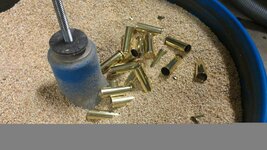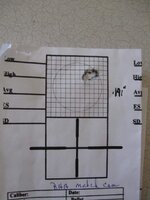- Messages
- 1,304
- Reactions
- 1,103
- Thread Starter
- #41
Except for the fact that you can't use the stainless steel pins in it. I haven't used corncob/walnut shell for so long I'm not sure I even have enough around to fill my vibrator type "tumbler".
One can easily get hooked on the clean (inside, outside, primer pockets too) cases the pin media produces. Couple that with the fact there's no more dust and the media will probably last a lifetime, it's hard to look back.
Kind of like when I switched from loading pistol rounds, one at a time, to a 650. No comparison.
Steel pins? Dust? Are we still talking tumblers?
I'm still confused on what the best/most efficient way to clean these suckers is. Came home today with another bag full of cases, I'm half tempted to get the tumbler thing figured out before building my bench so I can get to work on cleaning these thousands of brass. Seems like the reloading machine is a no brainer, not sure why the cleaning part is so complicated.













